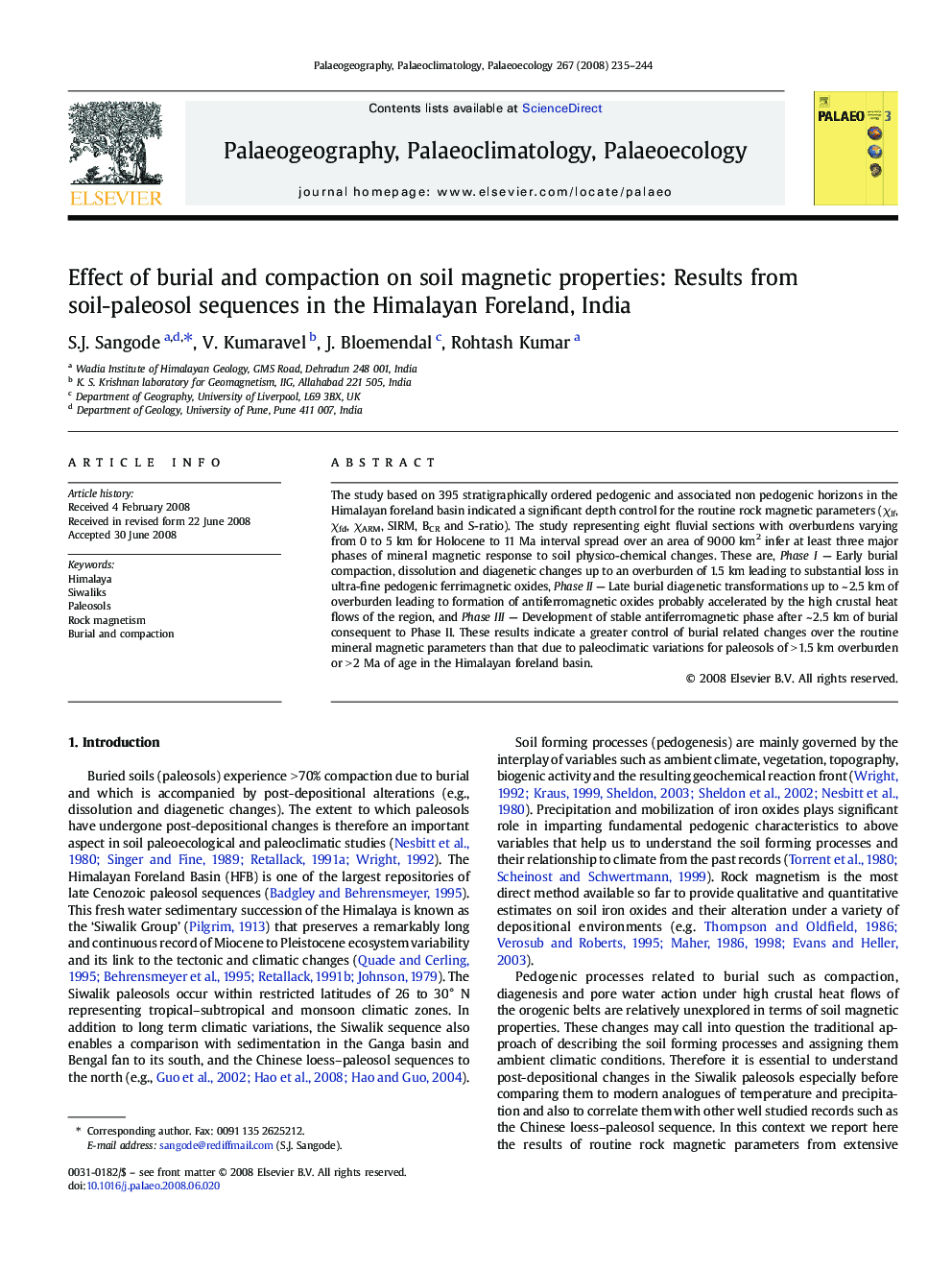| Article ID | Journal | Published Year | Pages | File Type |
|---|---|---|---|---|
| 4468471 | Palaeogeography, Palaeoclimatology, Palaeoecology | 2008 | 10 Pages |
The study based on 395 stratigraphically ordered pedogenic and associated non pedogenic horizons in the Himalayan foreland basin indicated a significant depth control for the routine rock magnetic parameters (χlf, χfd, χARM, SIRM, BCR and S-ratio). The study representing eight fluvial sections with overburdens varying from 0 to 5 km for Holocene to 11 Ma interval spread over an area of 9000 km2 infer at least three major phases of mineral magnetic response to soil physico-chemical changes. These are, Phase I — Early burial compaction, dissolution and diagenetic changes up to an overburden of 1.5 km leading to substantial loss in ultra-fine pedogenic ferrimagnetic oxides, Phase II — Late burial diagenetic transformations up to ~ 2.5 km of overburden leading to formation of antiferromagnetic oxides probably accelerated by the high crustal heat flows of the region, and Phase III — Development of stable antiferromagnetic phase after ~ 2.5 km of burial consequent to Phase II. These results indicate a greater control of burial related changes over the routine mineral magnetic parameters than that due to paleoclimatic variations for paleosols of > 1.5 km overburden or > 2 Ma of age in the Himalayan foreland basin.
